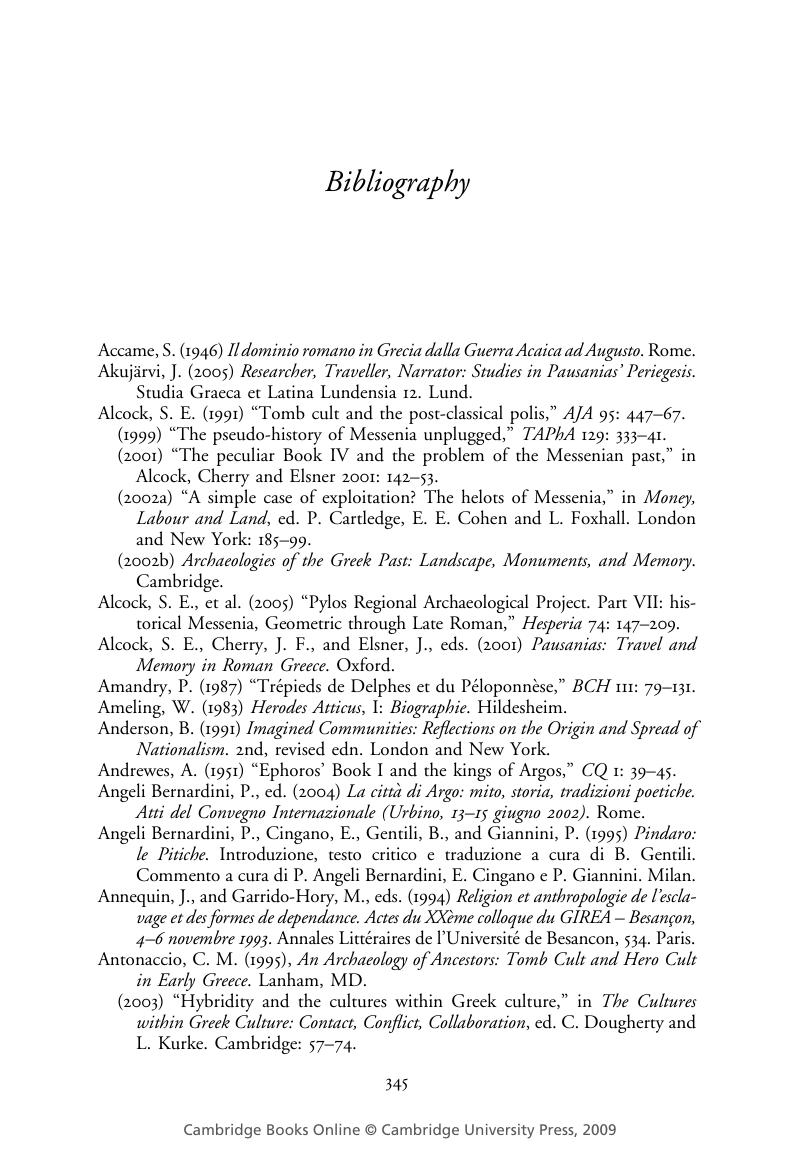Book contents
- Frontmatter
- Contents
- Acknowledgments
- List of abbreviations
- List of illustrations
- Chapter 1 Introduction
- Chapter 2 Delimiting the Messenians
- Chapter 3 The return of the Heraclids and the mythical birth of Messenia
- Chapter 4 The conquest of Messenia through the ages
- Chapter 5 Messenia from the Dark Ages to the Peloponnesian War
- Chapter 6 The Western Messenians
- Chapter 7 The earthquake and the revolt: from Ithome to Naupaktos
- Chapter 8 The liberation of Messene
- Chapter 9 Being Messenian from Philip to Augustus
- Chapter 10 Messenians in the Empire
- Chapter 11 Conclusions
- Bibliography
- Index locorum
- Index of inscriptions
- Archaeological sites
- General index
- References
Bibliography
Published online by Cambridge University Press: 22 September 2009
- Frontmatter
- Contents
- Acknowledgments
- List of abbreviations
- List of illustrations
- Chapter 1 Introduction
- Chapter 2 Delimiting the Messenians
- Chapter 3 The return of the Heraclids and the mythical birth of Messenia
- Chapter 4 The conquest of Messenia through the ages
- Chapter 5 Messenia from the Dark Ages to the Peloponnesian War
- Chapter 6 The Western Messenians
- Chapter 7 The earthquake and the revolt: from Ithome to Naupaktos
- Chapter 8 The liberation of Messene
- Chapter 9 Being Messenian from Philip to Augustus
- Chapter 10 Messenians in the Empire
- Chapter 11 Conclusions
- Bibliography
- Index locorum
- Index of inscriptions
- Archaeological sites
- General index
- References
Summary

- Type
- Chapter
- Information
- The Ancient MesseniansConstructions of Ethnicity and Memory, pp. 345 - 376Publisher: Cambridge University PressPrint publication year: 2008



